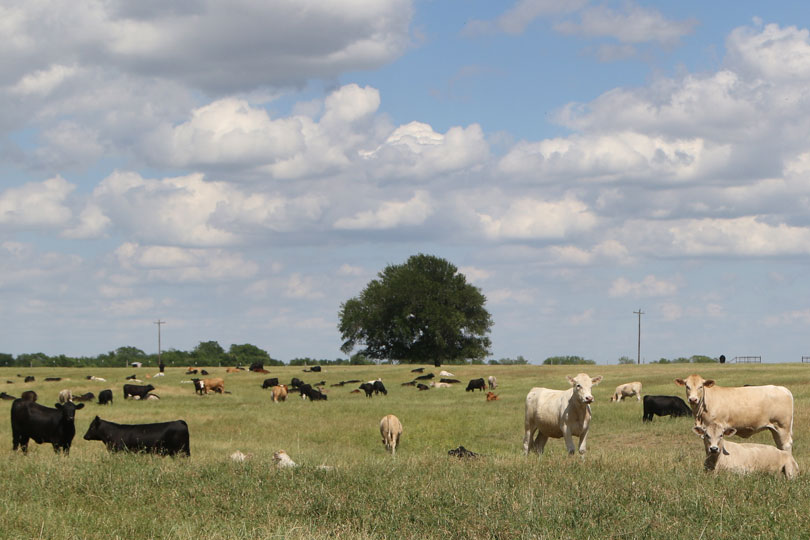By Jennifer Whitlock
Field Editor
There are more choices at grocery stores than ever before, including the selections in the meat case.
When it comes to beef, a range of U.S. Department of Agriculture (USDA) grades, breed-specific marketing programs and beef production claims are on the labels.
But do those beef production claims of practices like “no antibiotics ever,” “grass-finished” and “free from added hormones” translate into higher retail sales?
Current beef demand is high, with 71 percent of consumers reporting they ate beef at least weekly throughout the 2020 calendar year, according to the National Cattlemen’s Beef Association (NCBA)/Beef Checkoff Consumer Beef Tracker.
About 25 percent of consumers surveyed through the Consumer Beef Tracker said they purchased a beef product labeled with a production claim.
Participants reported they purchased beef with the following production claims over the past month in which they were surveyed:
- 24% said they purchased beef labeled as “grassfed”
- 18% said they purchased beef labeled “organic”
- 18% said they purchased beef labeled “free from antibiotics”
- 17% said they purchased beef labeled “natural/naturally raised”
- 15% said they purchased beef labeled “free from added hormones”
But volume associated with these production claims only represents about 3 percent of beef sales. This means purchase frequency is just occasional for the majority of consumers.
Grassfed
According to USDA Food Safety and Inspection Service (FSIS) guidelines, grassfed claims may only be applied to meat and meat product labels derived from cattle that were only fed grass or forage after being weaned. The diet must be derived solely from forage. Animals cannot be fed grain or grain by-products and must have continuous access to pasture during the growing season until slaughter.
Grassfed beef makes up a small fraction of beef sales volume in the U.S. because most cattle are grain-finished. There has been a slight increase since 2012 in beef marketed as grassfed, with the market share growing 0.2 percent from 2019 to 2020, or an increase of 21 million pounds.
Ground beef is the most popular grassfed beef product, comprising 80 percent of 2020 sales.
Natural/naturally raised
Natural or naturally raised is the largest category of production claim-based beef products sold at retail today. FSIS defines the term “natural” on labeling for meat and poultry products as a product that does not contain any artificial flavor, coloring, chemical preservative or any other artificial or synthetic ingredient. The product and its ingredients are not more than minimally processed.
“All products claiming to be natural or a natural food should be accompanied by a brief statement which explains what is meant by the term natural, i.e., that the product is a natural food because it contains no artificial ingredients and is only minimally processed,” FSIS states in its Labeling Policy Book.
Naturally raised is slightly different. A farm wishing to use this claim has to apply for that label and must follow certain approved production practices that define the particular standards granted by the naturally raised label. Each “naturally raised” label can mean something different as long as it’s approved by FSIS and explained on the label.
Natural and naturally raised beef retail sales showed a slight increase from 2019 to 2020, up 34 million pounds or 0.325 percent.
“Free from/antibiotic free”
So-called “negative labeling” claims, such as “free from added hormones” or “antibiotic-free,” also make their way onto many labels.
These production claims seem to be making small headway in the marketplace, increasing 0.26 percent or 27 million pounds from 2019 to 2020. A recent beef checkoff report said although all beef retail products saw year-over-year growth, the small increase in hormone and antibiotic free beef demand shows slightly more consumers want this option.
Organic
In the U.S., the term “organic” has strict production and labeling requirements and receives oversight or regulation from several USDA agencies.
After first gaining popularity in the early 2000s, organic products have seen explosive growth in some consumer food categories, but not all.
In 2020, 1 percent of beef sold for retail was labeled as organic. Organic beef’s market share increased just 0.15 percent from 2019 to 2020. The vast majority, or 88.1 percent, of organic beef is sold as ground beef products.
Ranching practices
Production claim labels do serve a purpose, fulfilling a niche market for consumers interested in particular production methods. The beef sector has shown it’s willing to adapt to consumer demands by providing choices, while still maintaining U.S. beef’s reputation as high-quality and safe.
But it’s apparent conventionally-raised beef is still the overwhelming choice in the meat case, with no signs of slowing down.
For a PDF explaining popular production claims, click here.
More information on how beef is raised is available from the beef checkoff.

